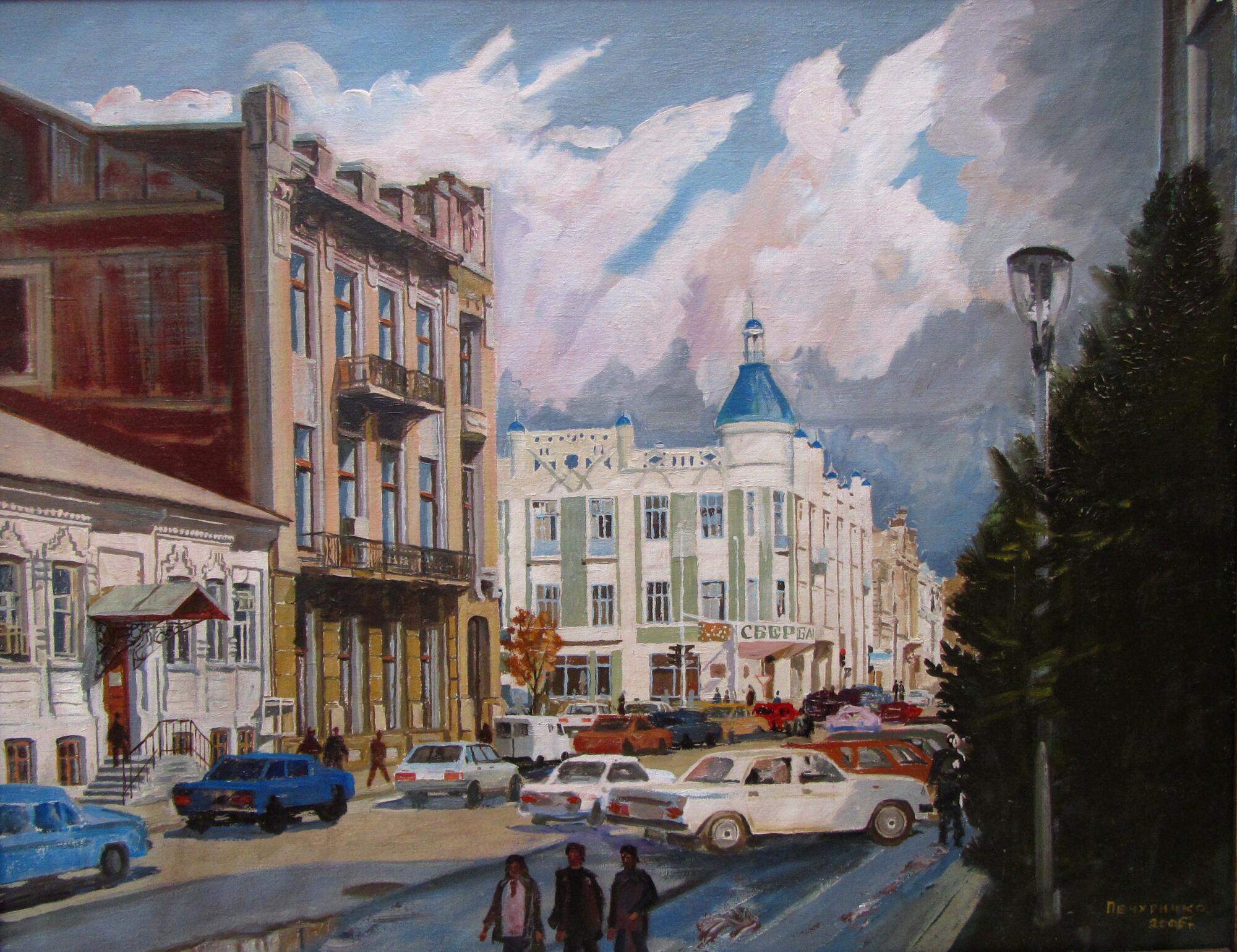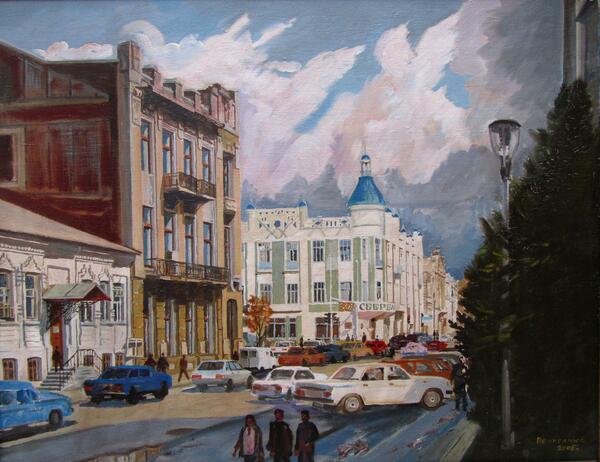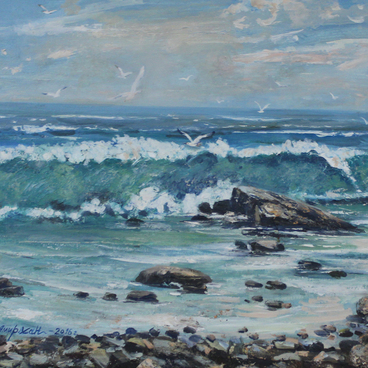The museum houses the painting “Gymnasicheskaya Street, Krasnodar”. It was painted by Russian artist Konstantin Pechurichko in the urban landscape genre. In his work, the author captured the measured calm life of one of the central streets of Krasnodar.
The center of the canvas is occupied by a white and green three-story building. On the first floor, above the entrance, one can see an inscription “Sberbank”: Pechurichko tried to represent the realities of modern life which unfolds against the background of classical architecture. Groups of passers-by in different parts of the painting help to convey the atmosphere and rhythm of city life.
The artist also depicted a large cluster of cars, among which a white Volga on the right side of the canvas stands out. With this detail, he emphasized the harmonious coexistence of different eras.
Konstantin Pechurichko was born in 1931 in Tashkent. He graduated from an art school and the Tallinn State Art Institute as a graphic artist. The master participated in international, all-Union, republican and regional exhibitions.
In the 1960s, Pechurichko worked in the art and production workshops of the Art Fund of the USSR, was a delegate of two congresses of the Artists’ Union of the USSR, and a board member of the Artists’ Union of the Russian Soviet Federative Socialist Republic (RSFSR). For his great contribution to the development of fine arts, he was awarded certificates of honor by the Ministry of Culture of the RSFSR and the Artists’ Union of Russia.
He moved to Krasnodar in 1978. There, he immediately became actively involved in the work of the local branch of the Artists’ Union: he worked with young people, future illustrators and easel painters, members of an association of artists, who depicted Soviet reality. His works were exhibited in Russia and abroad. At the same time, Pechurichko became interested in the history of the Cossacks: he studied Cossack folklore, created a series of portraits of Kuban Cossacks and several landscapes of Krasnodar, and participated in the events of the Kuban Cossack Army.
Pechurichko was also engaged in charity work. He often held master classes for children with disabilities, travelled with them to paint en plein air, and was especially active in supporting those who decided to dedicate their lives to the fine arts. The artist died in 2016.
The center of the canvas is occupied by a white and green three-story building. On the first floor, above the entrance, one can see an inscription “Sberbank”: Pechurichko tried to represent the realities of modern life which unfolds against the background of classical architecture. Groups of passers-by in different parts of the painting help to convey the atmosphere and rhythm of city life.
The artist also depicted a large cluster of cars, among which a white Volga on the right side of the canvas stands out. With this detail, he emphasized the harmonious coexistence of different eras.
Konstantin Pechurichko was born in 1931 in Tashkent. He graduated from an art school and the Tallinn State Art Institute as a graphic artist. The master participated in international, all-Union, republican and regional exhibitions.
In the 1960s, Pechurichko worked in the art and production workshops of the Art Fund of the USSR, was a delegate of two congresses of the Artists’ Union of the USSR, and a board member of the Artists’ Union of the Russian Soviet Federative Socialist Republic (RSFSR). For his great contribution to the development of fine arts, he was awarded certificates of honor by the Ministry of Culture of the RSFSR and the Artists’ Union of Russia.
He moved to Krasnodar in 1978. There, he immediately became actively involved in the work of the local branch of the Artists’ Union: he worked with young people, future illustrators and easel painters, members of an association of artists, who depicted Soviet reality. His works were exhibited in Russia and abroad. At the same time, Pechurichko became interested in the history of the Cossacks: he studied Cossack folklore, created a series of portraits of Kuban Cossacks and several landscapes of Krasnodar, and participated in the events of the Kuban Cossack Army.
Pechurichko was also engaged in charity work. He often held master classes for children with disabilities, travelled with them to paint en plein air, and was especially active in supporting those who decided to dedicate their lives to the fine arts. The artist died in 2016.



